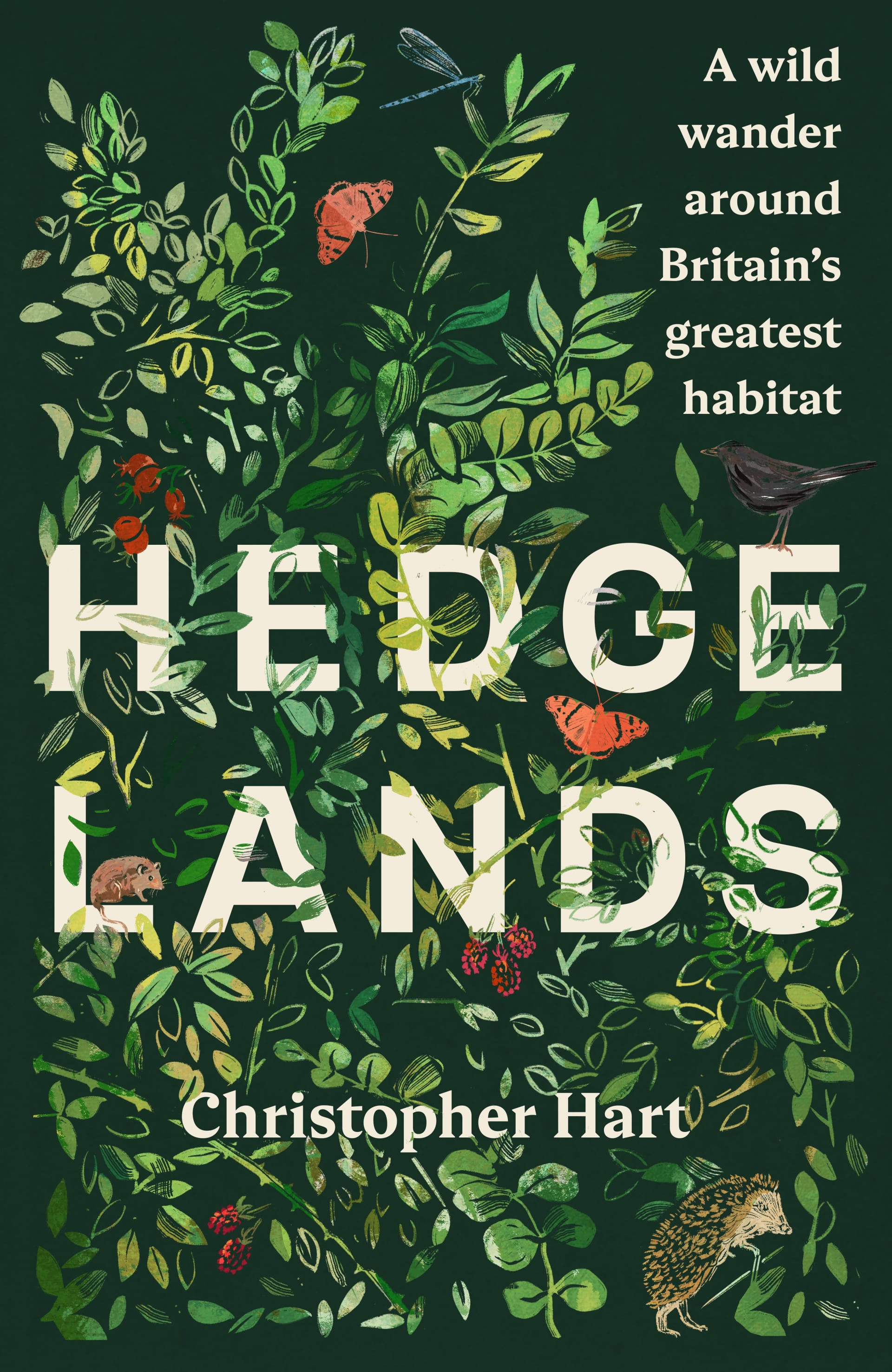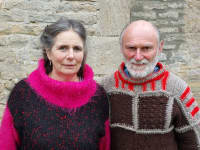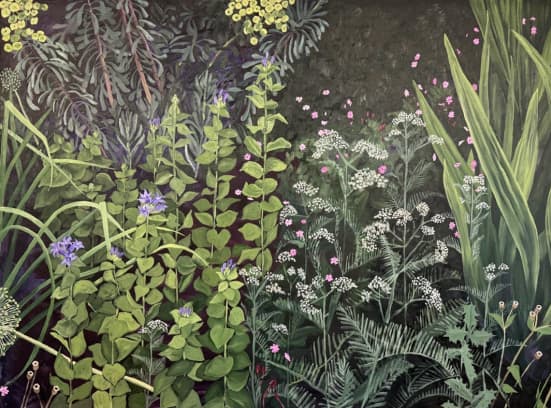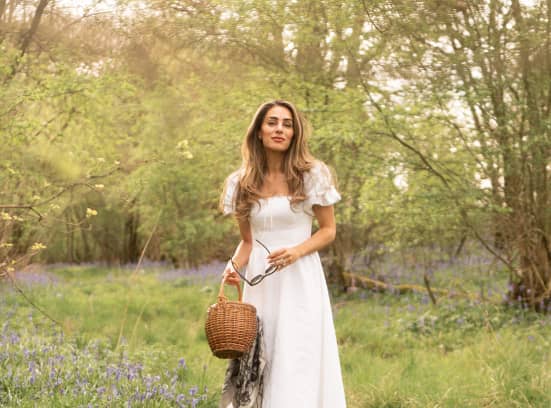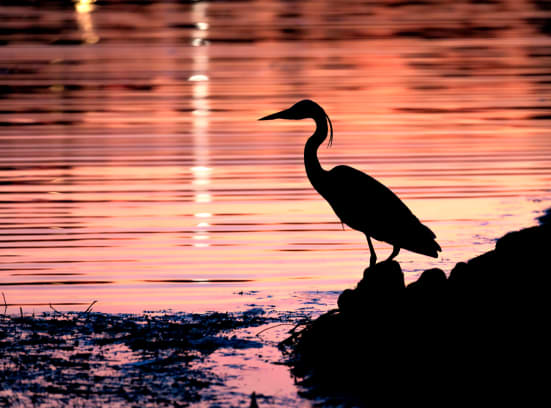In his latest book, freelance journalist, author and novelist Christopher Hart explores the history and ecology of Britain’s hedges.
In the UK we have over 400,000km of these human-made boundaries, which have become refuge for our wildlife. Further, the humble hedgerow has the potential to be a ally in the fight against the climate crisis. Examining real-life examples, like the hedgerow planted at Underhill Wood Nature Reserve in Wiltshire where Hart is based, he demonstrates the joy and reward in nurturing our ancient landscape. "What's good for us is good for nature, and what's good for nature is good for us. And nowhere is this more true than in the bustling. flourishing, flowering, fruiting and altogether glorious native British hedge.” Christopher Hart

The following is an edited extract from Christopher Hart’s new book Hedgelands: A Wild Wander Around Britain’s Greatest Edge Habitat (Chelsea Green Publishing, April 2024)
The Hedge Habitat
The traditional British hedge is the greatest edge habitat on earth. It is a green food bank, a windbreak, a stock fence, a flood defence system, an immense storage unit for excess carbon dioxide and an incomparable haven for wildlife. ‘Hedges may support up to 80 per cent of our woodland birds, 50 per cent of our mammals and 30 per cent of our butterflies,’ says the RSPB.
A hedge provides singing posts for birds, a crucial navigational aid for bats, and a cross-country route for any number of small mammals safely hidden from predators. Hedgerow shrubs and trees, bathed in sunshine, will also produce far more fruit that in a woodland. You won’t find many juicy blackberries in the heart of a dark oak forest, no matter how many brambles might be trying to grow there.
The most generous kind of hedge should include shrubs, trees and bushes, coppiced and/or cut and laid, forming a row. Due to their effectiveness in containing livestock, the thorniest of our native shrubs and trees will predominate, such as blackthorn, hawthorn, dog rose and crab apple. And, again, by happy chance, these thorny species are also among the most valuable for wildlife. Hawthorns, for instance, are the equal of beech or sweet chestnut for providing fruit and seeds, while their leaf litter – an often-overlooked micro-environment – is rivalled in importance only by the ash. A unique double.
Above this main scrubby, shrubby line that is the classic hedgerow will, ideally, tower some fine mature trees, with some showing signs of decay: not too many, though – one every few dozen yards is ideal. And then cladding the sides of the hedgerow all the way along, spilling down to ground level, will be ivy, bindweed and brambles, and then smaller flowers like celandines and dandelions, bluebells and perhaps even orchids. From end on, then, the shape of an ideal hedgerow will be a sprawling, spiky and messy pyramid, with a wide and generous bushy base. If of sufficient age, the entire hedge may sit on top of a venerable earthen bank, offering a whole new range of home-making possibilities to burrowing rabbits, badgers, stoats and so on, while the very best hedge will also feature a good damp ditch.
Taken together, such a hedge forms a narrow but incredibly complex ecosystem in a small area, comprising elements of mature woodland, woodland edge, thicket, flower-rich grassland and even wetland, which alone explains why it is so incredibly valuable a feature of our countryside.
The Future
Hedges are far more than quaint relics of the old-fashioned countryside that should either be left to quietly die out to make things more ‘efficient’ or else be flailed to within an inch of their lives. They form an unbroken line back through history, quite literally in some cases, to the native scrub of our ancient landscape. The celebrated ‘Judith’s Hedge’ in Cambridgeshire, for instance, is at least 900 years old – older than either Windsor Castle or Westminster Abbey, first sprouting at about the time the Crusaders were capturing Tyre.
At the same time, carefully nurtured hedgerows hold out a promise for the future as few other features of our landscape do. In a time of increasing food scarcity and supply-chain disruptions, a richly flourishing hedgerow can offer an abundance of free wild food, from greens in the spring to fruit and nuts in the autumn, as well as measurably increasing yields in the field it protects.
In a time of increasing rainfall, flood risk and soil erosion, hedges form a resilient living barrier to such challenges. And in a time of deeply destabilising and unpredictable climate change, they offer not just a vague, romantic sense of stability and continuity with the rose-tinted past, but a literal stability, locking up megatons of carbon dioxide in their complex and artful structures.
It is hard to imagine a greater monument to our faith in the future.
But hedges need maintaining, and a truly wildlife-friendly hedge needs to be laid, by hand, so that it can continue to grow and thicken in perpetuity. Where this has been done, we now still have flourishing hedgerows that go back certainly to Anglo-Saxon times, and arguably to the Bronze Age.
At first glance, the cost of hand-laying all the hedges on our country’s farmland seems so prohibitively expensive as to be a mere pipe dream. But costing such things is more complex than it looks. Farmers currently flail their hedgerows every year, whereas a well-laid hedge only needs laying once every ten years – and was sometimes even done on a forty-year cycle – resulting in colossal cathedral-like hedgerows in the meantime.
There are also the vast environmental benefits of flourishing ancient hedgerows, and their ecological services from flood control, soil protection and climate moderation, to the conservation of innumerable species of hedgerow-dwelling insects – especially at a time of devastating invertebrate decline.
With better management of at least a good proportion, if not all, of our incredible half a million kilometres of hedgerow, we might not need to worry so much about insects disappearing, bird numbers falling or our targets for carbon capture. Our lovely native hedgerows would do much of the work for us, if we only looked after them.
These accidental nature reserves stitch our countryside together into that famous ‘patchwork quilt’ that can be seen from virtually any hillside, moorland or downland in England or Wales. But when the stitching starts to fray and fail, and the patchwork quilt starts to come apart... What will we have to keep us warm when winter comes?
It would be wise to remember the old saw: a stitch in time saves nine. We should be saving and renewing our ancient hedgerows with the same zeal as our ancient woodlands. They are just as valuable.
